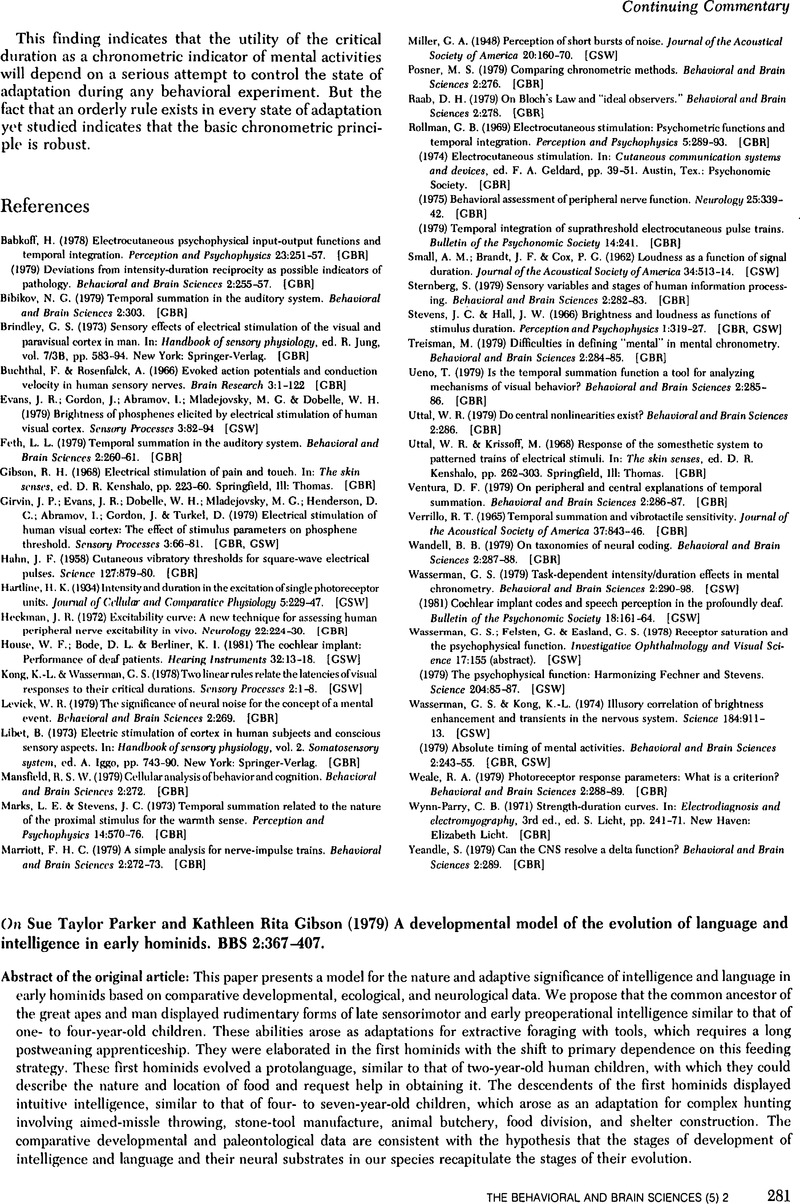Parker, S. T. (
1976) A comparative longitudinal study of the sensorimotor development in a macaque, a gorilla, and a human infant from a Piagetian perspective. Paper presented at the Animal Behaviour Society conference, Boulder, Colo. [KRG]
Google Scholar 